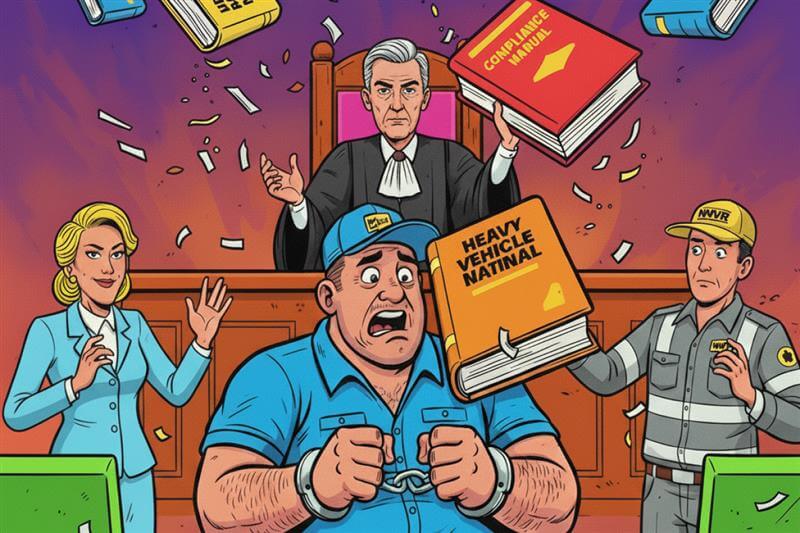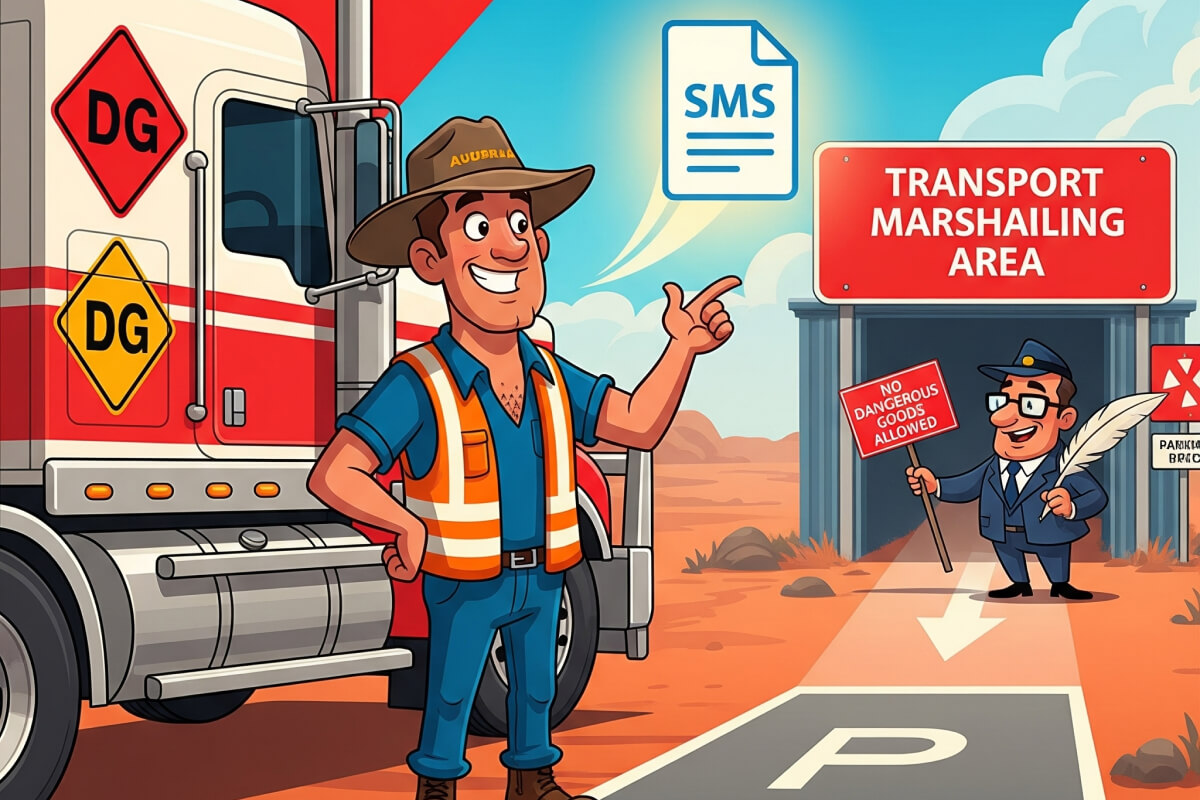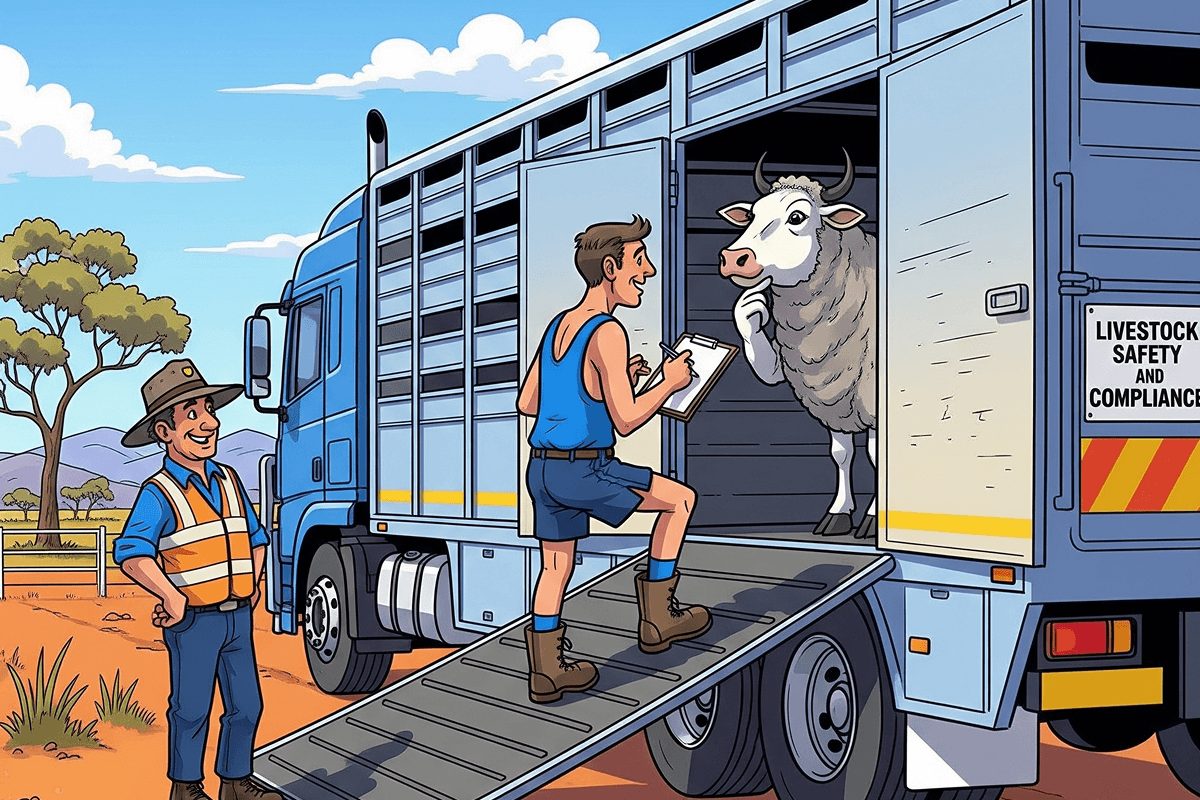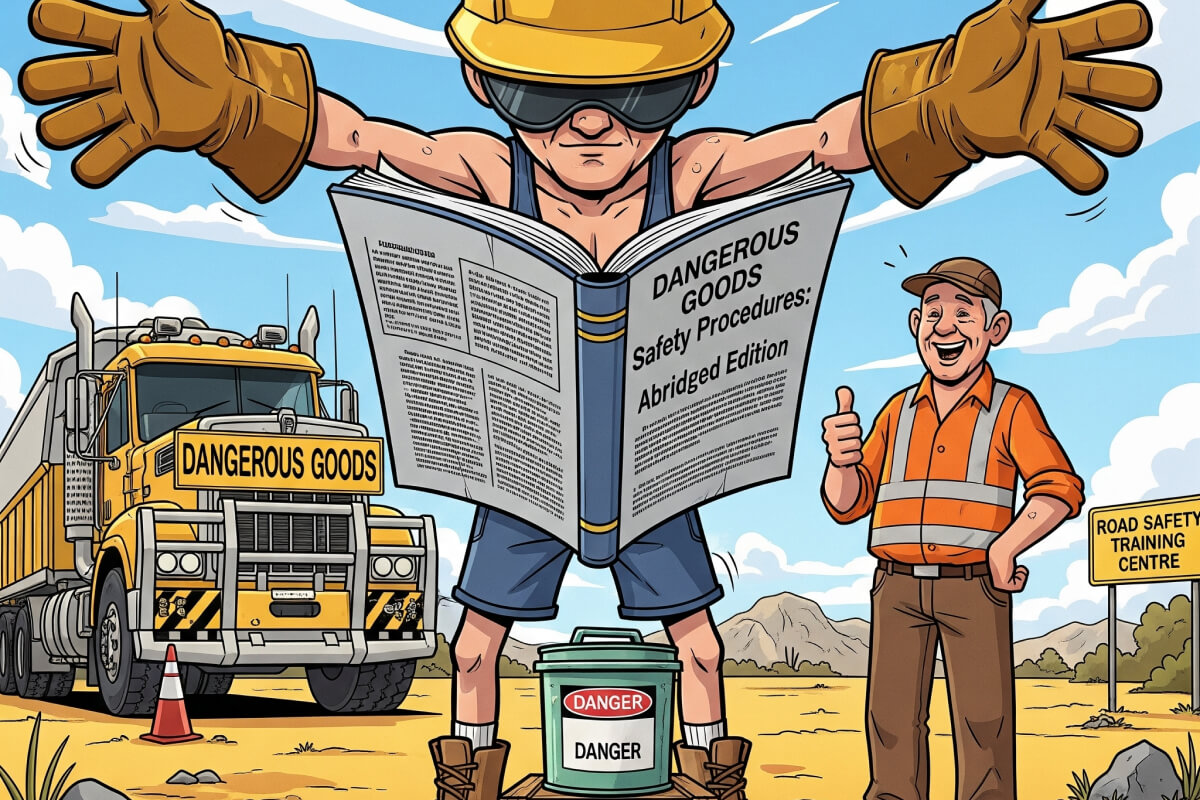
Risky Business Episode 19 features expert insights from Dr Kim Hassall and explores why lifting heavy vehicle compliance and safety standards is critical for long-term business sustainability. A key focus is the Driver Supervisor Assessment Program and the urgent need to verify driver competency in line with Chain of Responsibility obligations. If you don’t have time to catch the full episode, this summary below covers the key takeaways.
You can listen to the full episode here:
| Listen to the full episode on | ||
| Spotify | Soundcloud | Apple Podcast |
The Driver Supervisor Assessment Program: Bridging the Competency Gap
The prevailing notion that a driver’s license alone signifies readiness for the road is a significant misconception within the industry. While a license indicates basic proficiency, it often does not prepare drivers for complex, high-pressure scenarios like dense traffic, night driving, or handling heavy loads. To bridge this vital gap, the Driver Supervisor Assessment Program was developed by the Chartered Institute of Logistics and Transport Australia (CILTA), supported by extensive crash data from over 33,000 vehicles.
Post Licencing Assessment
This program is designed as a post-licensing assessment, functioning as a formalised buddy system. It specifically aims to identify and address weaknesses in a driver’s skills after they have obtained their heavy vehicle license, or for those upgrading to higher vehicle configurations. The program focuses on verification of competency, rather than being a training package.
How the Verification Process Works:
- Qualified Driver Supervisors: The assessment is conducted by experienced driver supervisors. To become a supervisor, they must complete a 10-module microcredential training, which can be done in a day. This microcredential acts as a refresher, revisiting elements of safe driving, roadcraft, and general knowledge, such as hazards, roundabouts, reversing, and overtaking. It aligns with the national microcredentials framework.
- 45-Element Assessment: The supervisor performs a 45-element assessment during a “run” with the driver. This assessment can be tailored by the company, varying the route, time of day, and road types to test the driver in different environments.
- Diagnostic Reporting: The assessment generates an electronic report. This report is not a pass/fail system; instead, it serves as a diagnostic tool. It uses a C+ rating to indicate proficiency and highlights specific areas where a driver is “requiring more work”. This allows businesses to pinpoint and address skill gaps.
- Focus on Specific Vehicle Types: The program recognises that every heavy vehicle configuration behaves differently. Therefore, it includes specific assessments for higher combinations like B-doubles, triples, and quads (referred to as MC1 and MC2). For instance, it can assess a new driver’s ability to reverse multi-combinations or handle A and B trailers, areas often lacking in initial licensing.
Benefits of Robust Competency Verification:
- Significant Crash Risk Reduction: The program has shown significant potential for a 15% crash risk reduction after just 16 hours of supervision. Even a 4-hour assessment can yield around a 5% benefit.
- Substantial Cost Savings: Financially, this can translate into millions of dollars in annual savings from avoided crashes for a typical thousand-truck fleet. For example, 16 hours of supervision could lead to average savings of AUD 11-12,000 per truck from major crashes, and approximately AUD 2.6 million in claims for a thousand-truck fleet, potentially influencing insurance premiums.
- Demonstrating Due Diligence: The electronically downloadable assessment report can be kept on the driver’s personnel file, providing documented evidence of a company’s commitment to driver safety and continuous professional development. This is invaluable in demonstrating that a business has gone the “extra yard” to ensure safety, particularly if an incident occurs. It ensures that “not knowing” about a driver’s weakness is no longer a valid defence.
- Accessibility and Affordability: The program is designed to be accessible and affordable for small and medium businesses. It avoids the need for a costly Cert IV accredited trainer, instead utilising a microcredentialled supervisor. The microcredential training for a supervisor costs approximately AUD 300, and ongoing supervision costs are manageable, ranging from an internal driver’s hourly rate (e.g., AUD 37.50) to about AUD 100 per hour for an external supervisor.
- Accelerated Licensing Pathway: This program is also seen as a potential pathway for accelerated heavy vehicle licensing.
- Continuous Improvement: It fosters a culture of continuous professional development (CPD) within a business, allowing for targeted improvement based on identified skill gaps.
The Imperative of “Fit for Duty” and Chain of Responsibility
The importance of verifying competency is underscored by recent shifts in regulatory accountability, particularly concerning “fit for duty” obligations under the Heavy Vehicle National Law (HVNL). High-profile cases, such as the Hunter Valley bus crash involving Link Bus Lines, have highlighted that merely having policies in place is insufficient; businesses are now being held accountable for the active implementation and enforcement of those policies, particularly concerning “fit for duty” obligations.
The HVNL mandates that all parties in the Chain of Responsibility (CoR) minimise safety risks, including those arising from drug or alcohol impairment, as far as is reasonably practicable. Executive officers must exercise due diligence to ensure robust systems are in place.
From Trust to Proof: What the Law Now Expects of Operators
The Link Bus Lines case specifically illustrates that failing to implement and enforce proper systems for managing drug and alcohol impairment risks is a direct breach of duty. Potential penalties are severe, reaching up to AUD 1.7 million per breach.
This signifies a departure from the “trust your drivers” mentality. “Not knowing” about an impairment risk is no longer a defence; it’s considered an admission of failure.
Effective fit-for-duty management now requires:
- A robust, documented random drug and alcohol testing policy that is consistently enforced.
- Thorough verification of driver history, including reasons for leaving previous employers.
- A practical fit-for-duty checklist that drivers and supervisors genuinely follow.
- Comprehensive training and documentation demonstrating proactive risk management.
Strengthening Due Diligence Through Verified Driver Competency
While the driver supervisor program directly addresses driving competency rather than substance impairment, it aligns with the broader principle of due diligence. By actively verifying and documenting a driver’s operational skills and addressing any weaknesses, businesses further demonstrate their commitment to safety and their “fit for duty” obligations, complementing other essential systems for drug, alcohol, and fatigue management.
Leveraging Hubfleet for Compliance and Cost Savings:
Hubfleet helps operators streamline compliance, transforming regulatory obligations into tangible cash and time savings. Hubfleet’s digital platform integrates all compliance aspects – fatigue, mass, safety, and vehicle maintenance – into one mobile app, eliminating manual paperwork and fragmented systems. Drivers can complete Electronic Work Diaries (EWDs) and pre-start checks directly from their cabs, while operators gain real-time oversight and generate reports from the office. This not only ensures audit readiness but also significantly reduces administrative burden and costs, allowing businesses to focus on moving freight and generating revenue.







